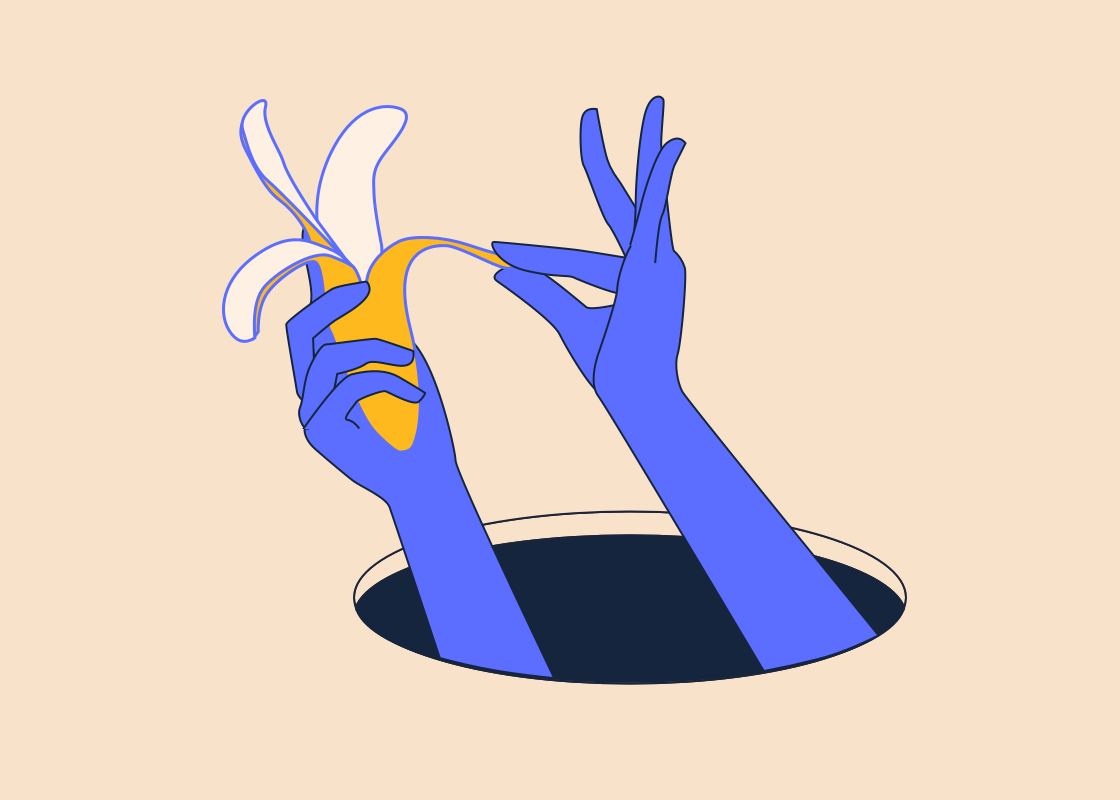When was the last time you had a good flirt? Do you remember that day when everyone looked a little more attractive? How about the newfound sexiness you felt moving through your body? These experiences are all linked to our libido and the wonderful role it plays in encouraging us to engage with our sexuality. Like the swings of the menstrual cycle, our sex drive is another factor that continually shifts gear in relation to our hormones.
What drives our sexual arousal levels is an individual, complex, and multifactorial experience. How we choose to engage with sex and entertain our libido are perfectly personal. Yet the taboo of female sexual pleasure still shadows many conversations, muting women’s concerns related to their sex drive. Present-day research is unhelpfully lacking, and often limited to heterosexual persons and relationships. There is still a lot more work to be done and additional studies needed. However, we will explore some overarching reasons behind how our hormones play a role in turning us on.
Hormonal Changes and our Libido
What’s increasing our sex drive?
Though it may feel like love strikes us in the heart, it is understood that the release of sex hormones estrogen and testosterone is what drives our lustfulness arousal (1). Testosterone plays a role in initiating sexual activities and pursuing sexual desire and behaviour in both men and women (2). Estrogen on the other hand appears to play a distinct role in a woman’s ever-changing sex drive. This happens in relation to her menstrual cycle. Though we need more research here, studies show that as a woman reaches ovulation, her levels of estradiol and testosterone peak. This correlates with an increased sexual desire (3).
Both estrogen and testosterone boost the production of other chemicals involved in pleasure and attraction such as dopamine and norepinephrine (4). Pleasurable situations encourages the release of dopamine which in return stimulates us to seek out the activity or experience further. This means that the feel good factor of sex and masturbation can get our sex drive going even more (5,6). Estrogen supports the release of dopamine, whilst testosterone helps our bodies to produce it (7). Norepinephrine is a key neurotransmitter (another kind of chemical messenger) regulating arousal, with studies showing that higher levels of norepinephrine result in a higher sex drive (8).
What decreases our sex drive?
Like they say, what goes up must come down, and the same goes for our libido. After the mid-cycle sex drive peak, also known as ovulation, estrogen levels start to deplete. Simultaneously, the amount of progesterone released in our body begins to rise. This lead up to menstruation is called the luteal phase, and although more research is needed, studies reflect a fall in sexual desire during this time (9). This suggests that there is a hormonal pattern that our sex drives follow, however each woman is different. Some studies have found that the lack of estrogen coinciding with an increase in progesterone can dry up the desire to get kinky (10). Many other pressures can kill our sex drive such as the pain and discomfort felt during menstruation (11). However, research also shows many women engage in sexual activities whilst menstruating, helping to break down the barrier of shame linked with period sex (12).
Our hormones aren’t just impacting our desire to itch the itch. They also help the experience of sexual arousal to be a stimulating, and satisfying experience.
Hormones and our bodies sexual arousal
How do hormones affect the cervix?
Recognising the way our genitalia changes in correlation with the release of hormones is eye-opening. It gives us amazing self-knowledge to determine at which stage we are at in our menstrual cycle. It also acts as a reminder that we are built to experience pleasure, but we’ll come to that in a moment. At the end of our vaginal canal sits the cervix, leading the way to our uterus, fallopian tubes, and finally the ovaries. Approaching ovulation, the rising levels of estrogen cause the ligaments inside of the vaginal canal, around the cervix, to tighten.
How do hormones influence genitalia on arousal?
Our hormones aren’t just impacting our desire to itch the itch. They also help the experience of sexual arousal to be a stimulating, and satisfying experience. Testosterone helps to encourage genital engorgement and sensation, enhancing levels of sexual satisfaction (2). Testosterone plays an essential role in regulating clitoral and vaginal changes, by helping blood reach the vestibular bulb (13). This is the body of the clitoris, positioned beneath the surface of the vulva. As the blood flow increases, pressure and swelling in the blood vessels leads to arousal fluids being released from the vaginal wall. The feeling of wetness is a normal and wonderful way that our bodies adapt for penetrative movement in a pleasurable way (14,15). On a side note, arousal fluids are different from cervical fluids - you can learn more by reading the article called The Wonders of our Cervical Fluid.
What could be causing loss of libido or low sex drive?
When sex life gets into trouble
Female sexual dysfunction (FSD) is estimated to affect up to 43% of women worldwide, becoming progressively widespread as women reach the menopause (16). It is a condition that requires far more research so as to aid female sexual pleasure globally. What we do know is that there are many subtypes of FSD including Female Sexual Arousal Disorder (FSAD). FSAD symptoms include a lack of sexual desire, the inability to orgasm, pain during sexual activities, and a resistance to arousal. These problems can be persistent or recurring, often linked to interpersonal difficulties as well as other health factors (17).
Importantly, a decrease in estrogen can result in a surge in vaginal canal acidity, causing discomfort and genital insensitivity (13). Options for treatments are limited to mostly testosterone based medication. However this has led to mixed results, and more research is needed (18). Further reports claim that estradiol treatments have a way of boosting sex drive, enjoyment, and orgasm frequency (19).
All forms of hormonal contraception come with a variety of benefits and disadvantages. Some side effects can include vaginal dryness and a decrease in lubrication, as well as pelvic floor symptoms such as cystitis and Urinary Tract Infections (UTIs) (17). These issues can lead to discomfort and distress during sexual activity and feel like a barrier in the road to pleasure. Research shows that progestin-based contraceptives, and combined oral contraceptives (COC) lower the amount of free testosterone in the body (20). When testosterone is lacking, the libido can lower, fatigue can strike, and a lack of sexual motivation can appear (3). Studies reflect that women using COC have a significantly lower sex drive, engage in less sexual activity and thought per month than non COC users (21).
External factors affecting sex drive
Female sexual pleasure is not just a bodily sensation but also a mindful experience. Where our head is at will have an impact on how our orgasms arrive. It’s important to recognise how psychological, environmental, and biological factors all play a role in lowering the libido (21). Good sexual health is dependent on a feeling of respect and safe, pleasurable experiences. For many, female sexual pleasure is equal parts mental stimulation and physical activities such as kissing, erotic caressing, oral-genital contact and anal stimulation (22).
Anxiety, distressing experiences, and emotional distractions can all have a huge impact on desire and the willingness to engage in sexual activity. Recognising the way stress impacts our hormonal cycles can tell us a lot about our mental health. We suggest you to check out our article on Stress and Menstrual Cycle to learn more. Remember, each woman’s experience of sexual pleasure is completely personal, so take the pressure off and explore your imagination with ease.
This article was reviewed Gianluca Adornetto, Lead Scientist at inne.
References
1. University of Wisconsin-Madison. Estrogen: Not just produced by ovaries, ScienceDaily. ScienceDaily, 4 December 2013
2.Al Awlaqi, Ahmed et al. Role of hormones in hypoactive sexual desire disorder and current treatment. Journal of the Turkish German Gynecological Association vol. 18,4 (2017), pages 210-218
3. Cappelletti, Maurand, and Kim Wallen. Increasing women's sexual desire: The comparative effectiveness of estrogens and androgens. Hormones and behavior vol. 78 (2016), pages 178-93.
4. Seshadri KG. The neuroendocrinology of love. Indian J Endocrinol Metab. 2016,20(4), pages 558-563.
5. Barth C, Villringer A, Sacher J. Sex hormones affect neurotransmitters and shape the adult female brain during hormonal transition periods. Front Neurosci. 2015
6. Graf H, Malejko K, Metzger CD, Walter M, Grön G, Abler B. Serotonergic, Dopaminergic, and Noradrenergic Modulation of Erotic Stimulus Processing in the Male Human Brain. J Clin Med. 2019;8(3), page 363
7. Hull EM, Muschamp JW, Sato S. Dopamine and serotonin: influences on male sexual behavior. Physiol Behav. 2004;83(2), pages291-307.
8. SM Stahl, Circuits of Sexual Desire in Hypoactive Sexual Desire Disorder, J Clin Psychiatry, 71:5, May 2010
9. Roney JR, Simmons ZL. Hormonal predictors of sexual motivation in natural menstrual cycles. Horm Behav. 2013;63(4), pages 636-645
10. Wallen, K., Periovulatory Changes in Female Sexual Behavior and Patterns of Ovarian Steroid Secretion in Group-Living Rhesus Monkeys, Hormones and Behavior, vol. 18, no. 4, 1984, pages 431–450.
11. Guillermo CJ, Manlove HA, Gray PB, Zava DT, Marrs CR. Female social and sexual interest across the menstrual cycle: the roles of pain, sleep and hormones. BMC Womens Health. 2010.
12. Katherine R. Allen & Abbie E. Goldberg (2009) Sexual Activity During Menstruation: A Qualitative Study, The Journal of Sex Research, 46:6, pages 535-545
13. Nguyen J, Duong H. Anatomy, Abdomen and Pelvis, Female External Genitalia, Treasure Island (FL), Jan 2020.
14. Levin RJ. The physiology of sexual arousal in the human female: a recreational and procreational synthesis. Arch Sex Behav. 2002, pages 405-411
15. Levin RJ. VIP, vagina, clitoral and periurethral glans--an update on human female genital arousal. Exp Clin Endocrinol. 1991, pages 61-69
16. Allahdadi KJ, Tostes RC, Webb RC. Female sexual dysfunction: therapeutic options and experimental challenges. Cardiovasc Hematol Agents Med Chem. 2009, 7(4), pages 260-269.
17. Casado-Espada NM, de Alarcón R, de la Iglesia-Larrad JI, Bote-Bonaechea B, Montejo ÁL. Hormonal Contraceptives, Female Sexual Dysfunction, and Managing Strategies: A Review. J Clin Med. June 2019, 8(6), page 908
18. Rita V. Weiss, Alexandre Hohl, Testosterone therapy for women with low sexual desire: a position statement from the Brazilian Society of Endocrinology and Metabolism, Arch. Endocrinol. Metab. vol.63 no.3 São Paulo May/June 2019 Epub July 18, 2019.
19. Motta-Mena NV, Puts DA. Endocrinology of human female sexuality, mating, and reproductive behavior. Horm Behav. 2017, 91, pages 19-35.
20. Niklas Zethraeus, Anna Dreber, Eva Ranehill, Liselott Blomberg, Fernand Labrie, Bo von Schoultz, Magnus Johannesson, Angelica Lindén Hirschberg, Combined Oral Contraceptives and Sexual Function in Women—a Double-Blind, Randomized, Placebo-Controlled Trial, The Journal of Clinical Endocrinology & Metabolism, Volume 101, Issue 11, 1 November 2016, Pages 4046–4053
21. de Castro Coelho F, Barros C. The Potential of Hormonal Contraception to Influence Female Sexuality. Int Journal of Reproductive Medicine 2019.
22. Andersen BL, Cyranowski JM. Women's sexuality: behaviors, responses, and individual differences. J Consult Clin Psychol. 1995, 63(6), pages 891-906.




